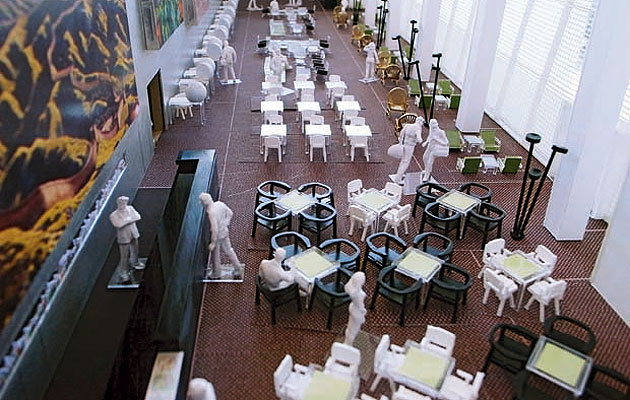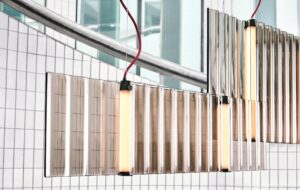|
|
||
|
It took a team of 11 leading architects to create the United Nations headquarters in 1952. The assemblage of sculptural forms on Manhattan’s east side, including Le Corbusier’s staunch 39-storey glazed tower and Oscar Niemeyer’s low, curving Assembly building, makes it one of the most recognisable sites in the world. But the interiors of these modern masterpieces, subject to strict security measures, have largely been kept a mystery. Early next year, a long overdue programme to redesign these interiors will come to completion. Member states were invited to fund renovations in return for making their mark on this historic building complex. “It’s so impressive, and there’s such a lot of respect for what is done,” says Hella Jongerius, who led an all-Dutch team including Rem Koolhaas, Irma Boom, Gabriel Lester and Louise Schouwenberg in redesigning the North Delegates’ Lounge. “In terms of style there was nothing given. But the space is so important that we all worked to celebrate its original state.” Denmark is redesigning the Council Chamber, Russia the Security Council and Turkey the Ambassador Lounge. But the North Delegates’ Lounge, which Jongerius has seen as a functioning space only in pictures, was seen as a big win for the Dutch consortium. The lounge is used by delegates for informal networking, but it is widely acknowledged as the place where deals really get done. “The lounge is large, with these monumental windows looking at the East River,” Jongerius says. The existing furniture, “a mere collection of survivors”, included Knoll club chairs added in 1975 and Hans Wegner Peacock chairs from the original 1952 design, which will both be re-used in the new space. Koolhaas and OMA will revise the lounge’s layout and remove the mezzanine that was added in 1979 and Irma Boom will design a graphic curtain for the north facade. Jongerius worked with Vitra to design new pieces to complement the old. RE-Lounge chair, in fabric and leather, responds to a need for flexible seating arrangements. “We needed a light, mobile chair that could enable several group configurations throughout the day,” she says. Bubble Desk, also made with Vitra, is a dark oak desk, with a translucent plastic dome that offers the user privacy. The dome also hides the bulky desktop computers that are a necessity at the UN, since laptops pose a security risk. For the east facade, Jongerius created a porcelain bead curtain. “The space has this very strict rhythm of horizontal and vertical lines and I wanted to soften that,” she says. “The curtain brings a piece of the Netherlands to the UN, because it’s made from clay dug from the Dutch manufacturer’s site.” Designing for the UN has its quirks. The beaded curtain is not just decorative; it obscures views into the lounge from hovering helicopters. There could be no screens or vertical obstructions so that the whole space could be seen on entering. “There had to be a feeling of safety and being able to overlook the whole space, to get a sense of who’s talking to who,” Jongerius says. Continuing in the collaborative spirit of the UN’s original designers, Jongerius’ team worked with united goals. “It has to be a functional space that’s also comfortable and timeless. And it’s a really long-term project. There isn’t the money to renovate every five years like a hotel lobby. Things really have to stand the test of time.” |
Image Vitra/Jongeriuslab
Words Riya Patel |
|
|
||

















